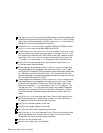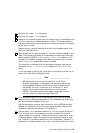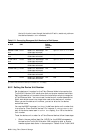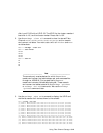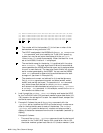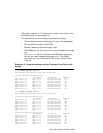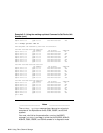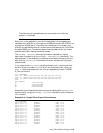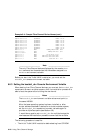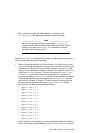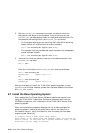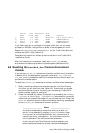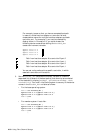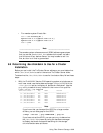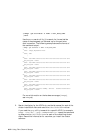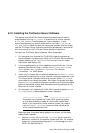
Example 6–4: Sample Fibre Channel Device Names (cont.)
dgb132.1001.0.2.0 $1$DGA132 HSG80 V8.5F
dgb132.1002.0.2.0 $1$DGA132 HSG80 V8.5F
dgb132.1003.0.2.0 $1$DGA132 HSG80 V8.5F
dgb132.1004.0.2.0 $1$DGA132 HSG80 V8.5F
dgb133.1001.0.2.0 $1$DGA133 HSG80 V8.5F
dgb133.1002.0.2.0 $1$DGA133 HSG80 V8.5F
dgb133.1003.0.2.0 $1$DGA133 HSG80 V8.5F
dgb133.1004.0.2.0 $1$DGA133 HSG80 V8.5F
dka0.0.0.1.1 DKA0 COMPAQ BB00911CA0 3B05
dqa0.0.0.15.0 DQA0 COMPAQ CDR-8435 0013
dva0.0.0.1000.0 DVA0
ewa0.0.0.5.1 EWA0 08-00-2B-C4-61-11
pga0.0.0.1.0 PGA0 WWN 1000-0000-c920-eda0
pgb0.0.0.2.0 PGB0 WWN 1000-0000-c920-da01
pka0.7.0.1.1 PKA0 SCSI Bus ID 7 5.57
______________________ Note _______________________
The only Fibre Channel devices displayed by the console show
dev command are those devices that have been assigned to a
wwid<n> environment variable.
Before you start the Tru64 UNIX installation, you must set the
bootdef_dev console environment variable.
6.6.3 Setting the bootdef_dev Console Environment Variable
When booting from Fibre Channel devices, you must set the bootdef_dev
console environment variable to ensure that the installation procedure is
able to boot the system after building the new kernel.
______________________ Notes ______________________
The bootdef_dev environment variable values must point to
the same HSG80.
After the base operating system has been installed, or after
cluster software has been installed for a cluster member system,
set the bootdef_dev console environment variable again to
provide multiple boot paths (see Section 6.8).
It would do no good to set bootdef_dev for multiple boot paths
now because the installation procedure overwrites the variable.
The following procedure is used for:
• The initial Tru64 UNIX installation before booting from CD-ROM.
6–46 Using Fibre Channel Storage



